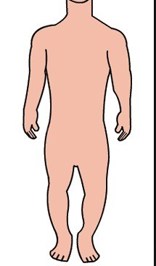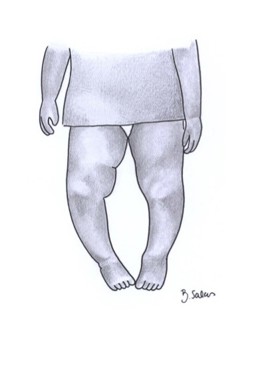Genu Varum (Bow-Legs)
Bow-legs (Genu Varum) are common and is considered normal until 2 years of age.
- There are signs of asymmetry.
- Changes are associated with pain or functional impairment (e.g., prone to falling).
- Changes are extreme (the femoral intercondylar distance is >6 cm).
- Changes worsen or persist beyond age 4 years, or worsen at any age in childhood as the degree of maximal bowing is present in very young children (up to the age of 2 years).
Conditions to consider include:
Rickets - check bone chemistry (calcium, phosphorus and alkaline phosphatase) and vitamin D; especially if the child is failing to thrive, has generalised aches and pains, or has other risk factors such as a vegan diet, prolonged exclusive breastfeeding, malabsorption syndromes or an ‘at risk’ ethnicity. A dietary history is an essential component in any child with a disorder of the bones, as Vitamin D deficient rickets is the most common metabolic bone disorder. In countries where exposure to sunlight may be limited in the winter, Vitamin D supplementation is often recommended.
Blount's disease - results in extreme bowing in one or both legs and is progressive. It is more common in black children of African descent and may be familial.
Skeletal Dysplasias such as Achondroplasia - consider growth and limb proportions (short limbs compared to trunk, also known as rhizomelic shortening).
Diagram below - short limbs compared to trunk in Achondroplasia

The picture below shows varus (bow legs) in rickets


